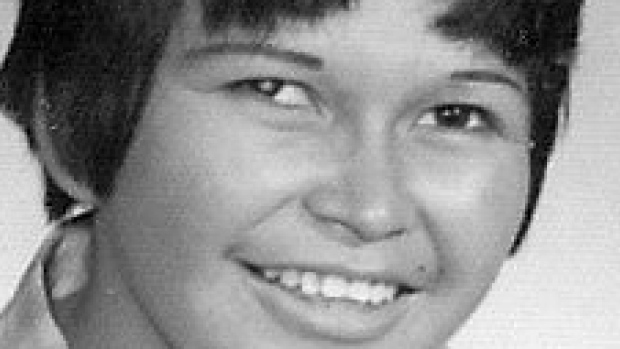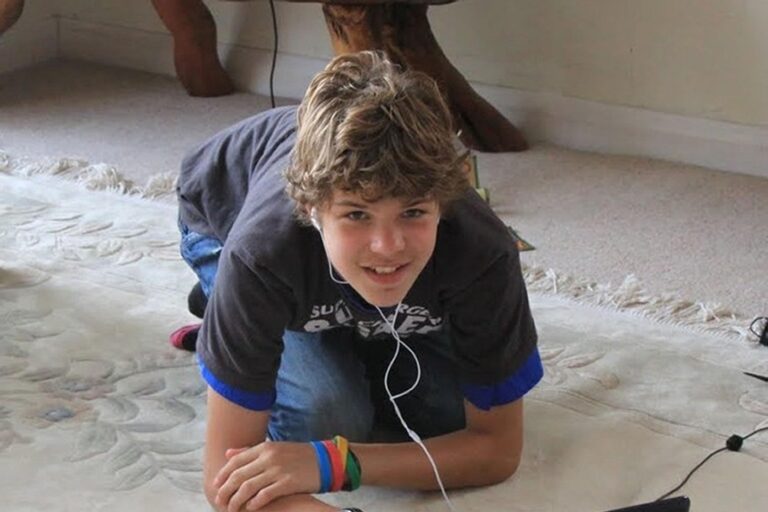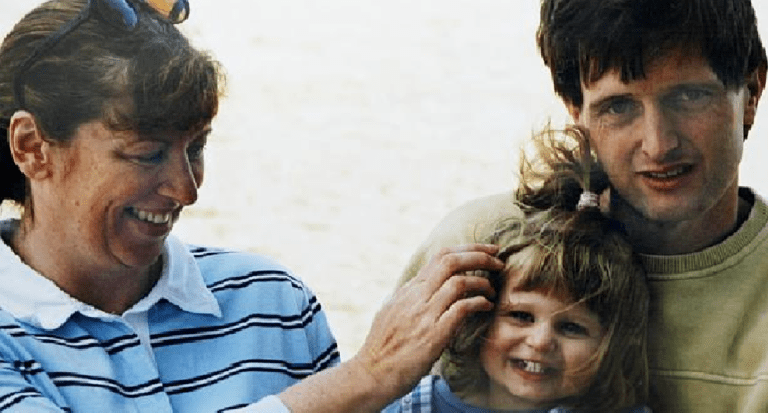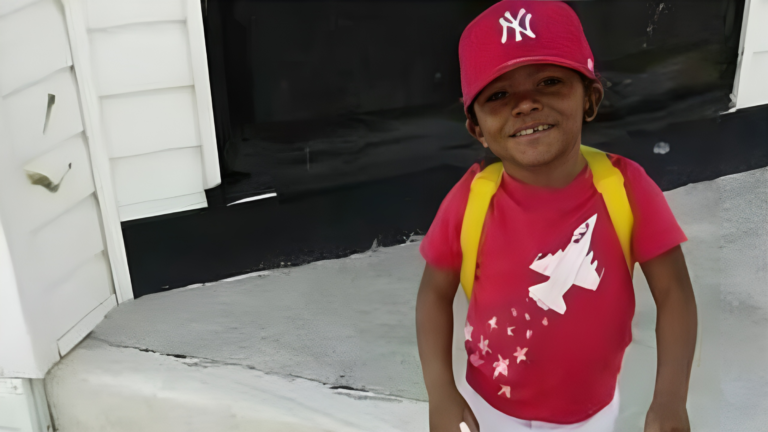Helen Betty Osborne, a Cree Aboriginal, was born in Norway House, Manitoba. In 1971, she joined a government program in which families were paid to home Native students. She was sent to live with a white family, the Bensons, in The Pas, Manitoba, later on in the year when she was 19-years-old. She attended Margaret Barbour Collegiate nearby where she studied to become a teacher; she had struggled with school in The Pas and was determined to become a teacher so that other children would not have to leave the reserve.
Helen settled in within the community and made numerous friends. In addition to having hopes of becoming a teacher, she had also looked forward to getting married and having children of her own. Sadly, her ambitions were stolen from her on 13 November, 1971.
Helen had spent the evening with her friends at a local cafe before deciding she would go downtown with her friends for a few drinks. At around midnight, her friends returned home, leaving Helen out alone. It’s unknown what happened to her between 12AM and 2:30AM but just after 2:30AM, a white ’67 Chrysler pulled up alongside Helen as she was walking along the dimly lit Third Ave. on her way home.1
Her naked body was discovered the following day by fishermen at Clearwater Lake, around 32 kilometres northeast of The Pas. Her clothing was discovered nearby the following day. She had been raped, severely beaten and then stabbed over 50 times with a screwdriver. The attack was a vicious and frenzied one and Helen had sustained a broken skull, cheekbones and palate while her lungs were damaged and her kidney was torn.
The Pas was a close-knit community of just 6,062 in 1971 but despite this, the case went cold. However, it remained the subject of local gossip. In fact, it was well known around town who had committed the murder but it wouldn’t be until sixteen years later that the suspects were named and arrested: Dwayne Archie Johnston, James Robert Paul Houghton, Lee Scott Colgan and Norman Bernard Manger. They were arrested and charged in connection with Helen’s murder.
There had been generated interest in the case when RCMP decided they would seek fresh leads . They placed details of the case in local newspapers and asked for new witnesses. The story was picked up by The Winnipeg Free Press and the fresh leads snowballed, eventually leading to the arrests of the four men. While the men were finally identified, over the preceding years, many in The Pas knew exactly who had committed the murder but Helen’s death had become a conspiracy silence among white townsfolk.
Following the arrests, Helen’s mother, Justine Osborne, said: “I don’t want to talk about it, but I am glad there will finally be a trial. I’m upset, but I’m also relieved.”2 However, the relief was only short lived when it was soon enough announced that only three of the men were charged: Johnson, Houghton and Colgan. The Crown decided that Manger was too drunk on the night of the murder to prosecute.
During the trial, it was revealed that Helen had been abducted by the men while she was walking home and was driven to a secluded location after she refused to have sex with them. The men drove Helen to a cabin where her screams were so loud that neighbours heard them.3 They then drove her to a remote pumphouse where she was stabbed to death with the screwdriver. According to Johnson, he was there but said that he did not participate. Forensic evidence, however, proved otherwise.
It was also revealed that in 1977, Colgan had confessed to the murder to Sheriff Gerald Wilson, over drinks. However, the sheriff did not report the confession until 1986, when RCMP asked for the public’s assistance in solving the case.4
While there was evidence against all of the men, only Johnston was convicted; Houghton was acquitted and Colgan received immunity for testifying against Johnston. Colgan had also played down Houghton’s role and implied that only Johnston was involved in the murder. 5 While one would imagine that such a brutal murder would warrant a life sentence, Johnson was released on parole after serving just ten years.
Due to the circumstances surrounding Helen’s murder and the shoddy investigation, the case became the subject of the Aboriginal Justice Inquiry. They discovered that the injustice was the direct result of racism, sexism, and indifference in the community. Although indigenous women make up 4.3% of the Canadian population, RCMP say that they account for more than 16% of female homicides and 11.3% of missing women. As Justine said during the hearing: “If it was a white girl who was killed, would they have done something?”
At the time of Helen’s murder, the movie theatre, schools and bars in The Pas were segregated and aboriginal people could not sit in the seats reserved for the whites. It was a time when people white people were not afraid to wear their prejudices against aboriginal people on their sleeves.6
The town’s silence and prejudice were also revealed during the hearing. According to Kathy Phillips, a civilian employee with the Royal Canadian Mounted Police, she had heard Colgan talking about the murder back in 1978 but never thought to report it to her employers. Colgan admitted that he had “colored” his testimony during trial to favor Houghton, who ended up being acquitted. In fact, Colgan had claimed during trial that Houghton had tried to stop Johnston from harming Helen but now, he was claiming that this was false.7
According to an anonymous local woman, she had been intimidated by a biker gang after testifying that she had overheard Johnston boasting about the murder at a party. There was also evidence from Helen’s friend, Annaliese Dumas, and her boyfriend, Cornelius Bighetty, that they had been treated roughly by RCMP in the wake of Helen’s murder. Both Annaliese and Cornelius were aboriginal.
In 2000, the government finally apologised over how the case had been handled. “Many parts of the justice system failed. I’ve looked at the steps that my department took at that time, and I’m far from satisfied that we did everything we could,” said Manitoba Justice Minister Gord Mackintosh. “Well, for me I guess… it’s sort of like letting go. I’ll try to move on with my life,” said her sister, Cecilia Osbourne.
The same year, the Helen Betty Osborne scholarship fund for native women was announced. The fund would provide $50,000 for the scholarship program and the interest will provide bursaries to aboriginal women who want to achieve the dreams that Helen never got the chance to achieve.
Footnotes:
- The Toronto Star, 30 November, 1991 – “Monsterous Masterpiece”
- The Toronto Star, 5 January, 1987 – “Clues Emerge in Teen’s Slaying”
- The London Free Press, 12 November, 2015 – “Story of Racism, Murder Retold”
- The Toronto Star, 26 February, 1988 – “Didn’t Act on Murder Confession”
- The Toronto Star, 15 July, 2000 – “Manitoba Says Sorry for Actions in Osborne Case”
- Sun Sentinel, 17 August, 1989 – “Indian Woman’s Murder Haunts Canadian Town”
- The Toronto Star, 3 July, 1989 – “Probe into 1971 Murder Reveals Town’s Silence”







Comments:
I’m sure there’s more to the story, but while claims of sexism are made in this article, there is no evidence offered to prove it. The victim’s own mother said it would have been a different outcome if Helen had been a white girl and a civilian woman heard the murderers boasting about their crime, but didn’t report it. Given the evidence provided in the article, i can believe that racism led to this injustice, but I don’t see anything pointing to sexism.
Of course you, as a man, would say that. Major eyeroll.
so do think that this exact situation would happen to a man? EXACT. if you look up the differences between the mistreatment of native man and women, native women are more likely to be murdered/raped. It’s unlikely three white women, would kidnapped rape and murder a native man, but very likely for a native woman to be kidnapped raped and murdered and then to have the case be “cold”.
GREAT WEBSITE.